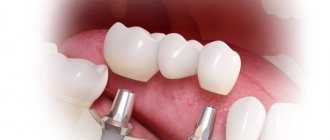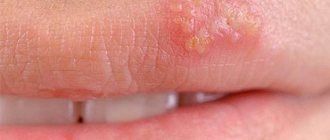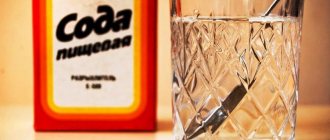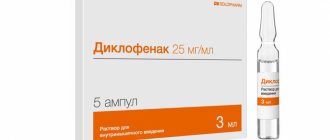24.07.2019 00:00
3532
Even those who love spicy food sometimes underestimate the sauce or spices and their taste buds start to burn. Due to a strong rush of blood, the formation of gastric juice increases, and its excess is thrown into the esophagus - this is how heartburn occurs.
Even those who love spicy food sometimes underestimate the sauce or spices and their taste buds start to burn. Due to a strong rush of blood, the formation of gastric juice increases, and its excess is thrown into the esophagus - this is how heartburn occurs. Unpleasant sensations in the mouth can be long-lasting, and you want to get rid of them as quickly as possible.
The first thing that comes to mind is to drink a glass of water. It seems like it can put out a fire quickly, but in reality it doesn't. What to eat or drink to eliminate the burning sensation after spicy food?
How does spicy food affect the body?
Eating foods with a lot of spices and seasonings often and in large quantities is harmful to the body. Such additives improve the taste of the dish, and sometimes you can simply forget about the measure, and overeating has never benefited anyone. It causes heaviness in the stomach, shortness of breath, gas, hiccups and, of course, heartburn. And no one has canceled the extra pounds. Many studies prove that excessive consumption of spicy foods causes diseases of the stomach and duodenum. Such food is absolutely contraindicated for people diagnosed with gastritis and ulcers.
After spicy food, bad breath appears. This applies more to onions and garlic, which create a specific “aroma” that does not disappear for a long time. Plus, the sensitivity of the receptors responsible for recognizing taste may decrease. The result is that the food will seem unsalted, bland and even unpleasant.
On the other hand, spicy foods in moderation can be beneficial. Spices and seasonings stimulate blood flow to the digestive organs, due to this, in some cases, the state of health during colds is made easier, and sputum in case of bronchitis is cleared better. The stimulating effect of acute to some extent has a positive effect on weight loss. This occurs as a result of activation of the cardiovascular system and acceleration of blood flow.
Research by some scientists proves that spicy foods produce serotonin, the so-called happiness hormone, which improves mood and increases overall emotional state and vitality. Therefore, a Mexican salad can be a great alternative to a chocolate bar.
Spicy food - harm or benefit
Why is spicy not a taste?
There are no others, which does not prevent us from using the word “taste” in everyday life when assessing the taste and aroma properties of dishes or drinks. The combination of signals from receptors in the sinuses and mouth allows you to experience sensations such as pain or irritation. For example, a fire starting in the mouth from spicy food.
When a spicy dish or sauce contains pepper, we are left breathless by capsaicin, a substance named after the Capsicum family of capsicums and which gives its name to a class of structurally similar substances.
About 10 capsaicinoids of natural origin have been isolated from hot pepper fruits. Capsaicin in this mixture accounts for an average of 70%, the second most common is dihydrocapsaicin (about 20%), the content of other species is less than 2%.
Fire in your mouth?
The highest content of capsaicin is in the pulp of capsicums and their seeds. In its pure form, if it comes into contact with the mucous membrane or skin, it causes severe irritation, but even the hottest pepper contains capsaicin that is safe
When spicy food enters our mouth, capsaicin binds to TRPV1 receptors located on the surface of the taste buds of the tongue and in the mucous membranes. After activation by capsaicin, TRPV1 receptors change their structure, and the signal about this change begins to travel along the trigeminal nerve - the main sensory nerve of the face and oral cavity - to the brain. The brain interprets this signal as an increase in the temperature in our mouth. The reason for this sensation is that TRPV1 receptors are usually activated when the temperature rises above 43°C. Thus, TRPV1 sends a signal to the central nervous system, warning that the body is overheating, thereby protecting its owner from the danger posed by hot food. These same natural “thermal sensors” can also recognize certain types of substances contained in foods that we consider “spicy”.
TRPV1 receptors are also activated by allyl isothiocyanate, a substance that gives mustard, horseradish and wasabi its pungency.
How capsaicin tricks the nervous system
TRPV1 receptors play a game of “confuse a chemical signal with a thermal signal” with our nervous system. Therefore, as soon as we eat something spicy, the brain believes that we ate something hot. The central nervous system takes urgent measures to cool the body: blood circulation is activated to speed up metabolism, and intense sweating begins to cool the body. The concentration of natural painkillers - endorphins - increases in the blood. The nasal mucosa becomes inflamed, which is why the nose begins to run, tears also flow, the eyes close - the brain gives the eyelids a command to protect the organs of vision from the “high temperature”.
The sensations that arise when a dish turns out to be more fiery than expected undoubtedly cannot be classified as pleasant. However, in the amount in which capsaicin and capsaicinoids are contained in peppers or sauce, these substances do not cause physical damage to tissues and organs, but this does not mean that spicy foods are completely harmless.
Experiments on mice showed that the dangerous dose of capsaicin is 47.2 mg per 1 kg of animal weight. In terms of an average person weighing 80 kg, this is 3.8 grams. That is, you need to eat 200 grams of dry chili powder at once, which is physically impossible.
Spicy: harm and benefit
If we accidentally put something too spicy in our mouth, we may experience indigestion, nausea and vomiting. Why? If the activation of TRPV1 receptors is too intense, the brain reacts as if we had swallowed something very hot. Having been deceived, he tries to take all measures to bring out the supposed danger as quickly as possible, initiating vomiting. And during the urge to vomit, gastric juice ends up in the esophagus, where it should not be, and the acid it contains can severely damage the esophagus. The degree of damage will directly depend on the degree of irritation of TRPV1 receptors and the brain’s assessment of the potential “threat”.
This reaction of the body, in turn, suggests that a sharp transition from the usual sweet bell pepper to one of the hottest cayenne peppers will not only give us a lot of unpleasant sensations, but also endanger our health.
However, regular consumption of pepper dishes with a gradual increase in their heat allows you to develop resistance to the action of capsaicin and train the body to do without vomiting. And endorphins, natural painkillers and substances that allow you to feel pleasure that enter the bloodstream as a result of activation of TRPV1 receptors, contribute to the fact that over time a person can completely genuinely enjoy dishes with hot peppers.
Where hot peppers began to be grown and consumed earlier, people get used to it earlier. Some children's Mexican dishes seem too spicy for adult Europeans, because the Aztecs and other inhabitants of Central America grew hot peppers long before Columbus.
The domestication of chili peppers most likely began after it was noticed that meat and fish that came into contact with these red pods or powder from them had a longer shelf life - many of the substances contained in chili peppers are natural preservatives that kill microorganisms that cause food to rot.
Many guidebooks to South America recommend that tourists eat spicy foods to avoid contracting an intestinal infection. The substances that make up chili peppers kill pathogenic microorganisms or slow down their reproduction. Capsaicinoids inhibit the growth of some bacteria dangerous to humans, but pepper owes its antimicrobial properties to another substance - the flavonoid chrysoeriol, which, like many other flavonoids, tastes bitter to us.
The name “chili pepper” is similar to the name of the country Chile, but comes from a word from the Aztec Nahuatl group of languages, from which “chilli” is translated as “red.”
How to determine the heat of pepper
You can understand which pepper will be too hot for us using the heat scale. There are several of them, but most often scientists and cooks take the Scoville scale as a basis.
In 1912, American chemist Wilbur Scoville proposed using a quantitative scale based on taste sensations to measure the spiciness of peppers. An extract from various varieties of pepper was dissolved in alcohol, after which a drop of the alcohol solution was mixed with sweetened water and given to five tasters to taste. If they said that the burning sensation was felt, the solution was diluted and given again for testing. The unit of measurement was the volume of water drunk, which was required for the heat to cease to be noticeable - the more points a pepper or dish scores on the Scoville scale, the spicier it is.
The scale, compiled according to the subjective feelings of tasters, cannot be called ideal. Later in chemistry, more accurate approaches to determining the capsaicin content in a product appeared. But culinary experts still prefer to use the Scoville scale - in cooking, what is more important is what sensations a person will experience.
Published: March 21, 2022
Oil
Capsaicin is soluble in oil. It is not recommended to drink olive or vegetable oil. However, consuming dishes with the addition of this dressing will help relieve pain and burning. You can also rinse your mouth with the oil and spit it out.
If it’s a trench coat, then it’s leather: Paris street style trends for spring 2021
“For many you are an example”: Agata Muceniece spoke about her relationship with Kurtsyn
If you've been invited to a wedding, but want to wear a black dress: stylish options
Why does pepper burn?
Capsaicin is an oily substance found in some varieties of hot peppers; it is this component that gives dishes a special, specific taste. During cooking, pepper juice can get on the skin of your hands, thereby instantly causing a burning sensation and redness, which is very difficult to neutralize.
The amount of this component in all varieties of pepper is different. Thus, the more capsaicin, the stronger the burn from contact with the skin. Some of the most popular hot peppers are chili pepper, red hot pepper, and cayenne pepper.
Pepper heat units
What to do if you eat chili peppers
Quite often, a person may even unintentionally consume hot red pepper, for example, by confusing it with its sweet counterpart. How to relieve burning in the mouth? Effective ways:
- Drink milk. Fermented milk products significantly reduce the negative manifestations of the pathological process due to the destructive effect of casein on capsaicin. To enhance the positive effect, you should use chilled products. Take a sufficient amount of milk into your mouth and rinse the cavity with it. Repeat the activity until the burning sensation disappears,
- Use any vegetable oil. To partially neutralize the effects of red pepper, olive, sunflower or any other oil is suitable. These products contain a significant amount of complex fats that dissolve the aggressive components of pepper. There is no need to drink the substance and rinse your mouth with it - just take a gauze or cotton swab, dip it in vegetable oil, and then treat the mucous membranes of the oral cavity, tongue,
- Use lemon juice. Lemon juice contains a mild acid that destroys capsaicin. To neutralize the pathological reaction, squeeze a sufficient amount of liquid from the lemon, dilute it with water in a 1:1 ratio, then rinse your mouth for several minutes.
Take some acid
This method comes to our aid from Thai cuisine, which uses a lot of chili peppers. Therefore, to neutralize the spice in most of their dishes, they use citric acid, vinegar or even ketchup. One spoon can work a real miracle and make the taste balanced.
Add sugar
It and other sweeteners add a different flavor profile that can counteract the spiciness. You should be careful here, as the taste can deteriorate and instead of the usual dish, you will get dessert.
Treatment of burns from hot spices
In some cases, at high concentrations of capsaicin and prolonged contact, prerequisites for the development of a burn may form. This type of damage to the skin and mucous membranes is a typical pathology of a chemical nature. As medical practice shows, in this situation 1st or 2nd degree burns are formed. They are characterized by:
- Pain and severe itching
- Redness of the skin,
- mucous membranes,
- Development of swelling.
In some cases, the appearance of small blisters with transparent contents or a local rash or secondary manifestations is diagnosed. First aid and subsequent treatment scheme:
- Elimination of substance . Blot the damaged areas with a dry cloth, then wash them with sodium bicarbonate solution,
- Reducing the inflammatory process. After removing the substance from the skin and mucous membranes, the affected areas are placed under a stream of cool, clean water for 15-20 minutes,
- Antiseptic treatment. The epidermis, face and eyes are treated with safe antiseptics that reduce the risk of developing a secondary bacterial infection. Miramistin or Chlorhexidine is used,
- Assistive therapy. After completing the above measures, it is possible to locally use available products based on dexpanthenol, which promotes the healing of soft tissues. In addition, if necessary, antihistamines (ointments or tablets) are used to relieve allergic reactions, analgesics to relieve pain, and steroids as prescribed by a doctor.
How to remove a burning sensation in the mouth
If there is an excess of hot pepper in your mouth, and a painful burning sensation persists for a long time, then in this case it is necessary:
- First of all, eat a small piece of rye or wheat bread, which will absorb the hot oil and relieve the burning sensation in your mouth.
- Cold fermented milk products do an excellent job of this task: kefir, yogurt, fermented baked milk, sour cream and even ice cream. Or just rinse your mouth with milk from the refrigerator. This method is able to minimize the effect of the hot component of pepper on mucous areas. The main thing is that the higher the fat content of the product, the more effective the result will be.
- Alcohol is also a good way to relieve discomfort. It is most effective if it is some kind of wine. One glass is enough.
- Eating boiled vegetables with a high starch content: potatoes, corn will quickly relieve discomfort in the mouth and esophagus. In addition, boiled rice, banana, and a slice of lemon will also perfectly eliminate discomfort.
- If the pepper only gets on the tongue, then you need to prepare sugar syrup (3 teaspoons of sugar per 200 ml of water) and rinse your mouth and throat with it for 30 minutes.
After eating hot pepper, you should not drink it with water. This is due to the fact that the component capsaicin does not dissolve in water, thus, it can only worsen the condition of the “fire” in the mouth.
Possible consequences
In general, pepper burns on the skin do not cause any negative consequences - 7-12 days after the incident, the epidermis is completely restored.
Contact of the active component of pepper in the eyes poses a moderate hazard. It can cause severe irritation of the visual organs, requiring additional treatment by an ophthalmologist.
Much more often, the consequence of a burn from pepper and pepper spray is the background development of an allergic reaction. It can manifest itself either moderately in the form of a local rash or quite severely, up to the formation of Quincke's edema throughout the body and anaphylactic shock.
How to protect yourself from burning
In cases where you are preparing a dish using hot peppers, you must prepare in advance and place next to you a container with water and bleach in proportions of 5:1. In this solution, when cutting peppers, you should periodically wet your hands and rinse them with water.
In addition, the safest method to protect yourself from getting burned is to use latex gloves or plastic bags while cooking. Or you can wet your hands with vegetable oil, which will neutralize the capsaicin. Only in this way is there a high probability of avoiding burns on your hands and getting pepper juice on other parts of the body and in the eyes.
To avoid getting burned when working with pepper, you must use safety precautions. And if necessary, immediately use the above traditional remedies to eliminate the symptoms of burning and burns. If pain, discomfort, burning in the eyes and body persists after the procedures, you should definitely contact a medical specialist for specialized care.
How to remove burning sensation on the skin
If you handle hot pepper carelessly and get it or its juice on the skin, a burn will form. To alleviate the condition of the skin, it is necessary to use traditional methods of getting rid of burning sensation.
- Dairy products effectively eliminate pain caused by contact with hot peppers. This is explained by the fact that the substance casein, which is found in dairy products, reacts with capsaicin and neutralizes it. If your hand has been burned, then you need to lower it into a container of milk, where it is better to first add ice cubes. Or generously wipe other areas of the body with a cotton swab.
- An equally effective method would be to use regular petroleum jelly and vegetable oil, since the hot components of pepper dissolve under the influence of other oils.
- Baking soda must be diluted with water to a thick paste, and the mixture should be applied to the affected areas of the body. After drying, wash off the mask under running water.
- Alcohol will get rid of the “fire” on the skin; it acts on capsaicin as a solvent. Periodically wipe your face, hands and skin with a moistened cotton swab until discomfort is eliminated.
What actions to take if you are sprayed in the face with pepper spray
The composition of pepper spray intended for civil self-defense is based on a concentrate of capsaicin, an active irritant of plant origin. If it comes into contact with the eyes or skin, the following actions must be taken:
- with a dry napkin or cloth to collect any remaining liquid. This must be done as carefully as possible, without spreading the product over the epidermis and mucous membranes,
- Blink your eyes frequently until your eyes water. The biological fluid prevents the concentrated solution from entering directly onto the organ of vision,
- Water the damaged areas with fermented milk products. You can wash off the concentrate from the pepper spray from the skin and eyes with milk, kefir or other high-fat liquid products. Water the skin and mucous membranes, but do not rub them,
- Use a soda solution . Dilute 15 grams of baking soda in 0.5 liters of water, then rinse your eyes, face and other affected areas where liquid from the pepper spray got in,
- Take off all your clothes , stand in a warm shower and wash yourself, lubricating yourself generously with soap.
What to do if pepper juice gets in your eyes
When preparing dishes with pepper, it often happens that after washing your hands poorly, when rubbing your eyes, the substance capsaicin gets onto the mucous membrane, or the juice accidentally splashes into your eyes, which causes severe pain and burning.
It is very difficult to find special eye drops for such cases in your home medicine cabinet. Therefore, there are several traditional and effective methods to neutralize capsaicin and eliminate unpleasant sensations:
- It is necessary to steep the tea bag or tea leaves for 5 minutes to ensure a strong solution. Wipe the eye with a generously moistened cotton swab towards the inner corner of the eye.
- Using the same principle, you can prepare a tincture of chamomile or calendula. Pour into a large bowl so that you can put your head in there; your eye should be immersed in the prepared solution. You must try to open your eye and blink it, and also actively roll your eyeball.
- The most effective eye wash is cow's or goat's milk. It must be instilled using a special pipette. In this case, the milk should flow back when instilled, thereby washing away the burning substance.
- Everyone in their home pharmacy probably has a drug such as furatsilin, which is very popular in ophthalmology. To do this, you need to dissolve 1 tablet of furatsilin in cooled boiled water (strain), and rinse the eyes with a sterile pipette, instilling them into the conjunctival sac (or organize an eye bath). It’s even better if it’s injectable furatsilin, which doesn’t need to be diluted with water.
- After the procedure, it is necessary to instill eye drops that have an anti-inflammatory effect.
Do not rub your eye with anything that can injure the mucous membrane. There is a high probability of a wound or scratch forming where infection can penetrate.











